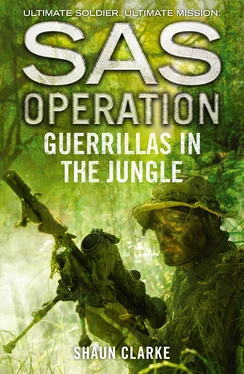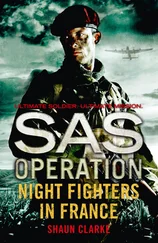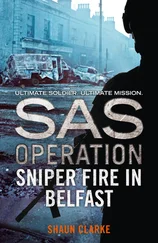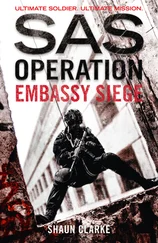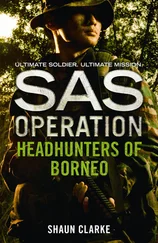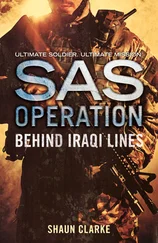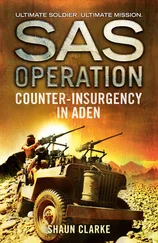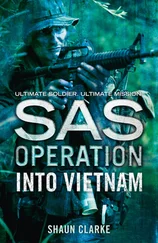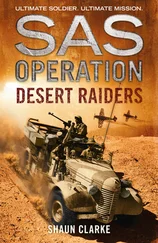When the discussions ended, at 9.00 p.m. sharp, they went straight to bed.
Given such a harsh, undeviating routine, to be called upon to join a patrol into the jungle often seemed like a blessing.
All of the men and women in that particular morning’s patrol were Chinese Malays. While some had been born in Malaya, others in China and a few in Hong Kong, Borneo or Sumatra, they all spoke Kuo-yii, the national dialect of China and the lingua franca of the jungle. They spoke in a whisper, and then only for the first few minutes; once away from the camp, deep in the jungle, they maintained a resolute silence, communicating only with hand signals.
Their armament for the patrol consisted of a British Bren gun, three antiquated tommy-guns, ten rifles, five shotguns, five pistols and a parang , or Malay jungle knife, shaped like a machete, one of which was carried by each member of the patrol.
From the vegetable gardens and rubber trees at the edge of the camp, they plunged straight into the darkness of the jungle. The ground was covered with a thick carpet of dead leaves and seedling trees, though no grass or flowers were to be seen. A dense undergrowth of young trees and palms of all kinds climbed to a height of about twelve feet, obscuring the giant roots of the trees. Out of the tangled green undergrowth, however, the countless tree trunks rose straight upwards for 150 feet, where they formed a solid canopy of green that almost entirely shut out the sky. The tree trunks, though similar in that they were all of a uniform thickness and straining up towards the light, were of every colour and texture: smooth and black, scaly and ochre-red, pale grey or green with moss, some as finely dappled as a moth’s wing.
The trunks were often hidden by a network of creepers which in places broke out into enormous leaves. Elsewhere, the vines and creepers hung straight down from the branches to the ground, where they had taken root again, looping themselves from tree to tree like a ship’s rigging. Up in the treetops, where the great trunks suddenly burst into branches, were huge hanging gardens of moss and ferns, themselves covered in tangled webs of liana and creepers. This dense canopy of constantly rotting, regenerating, intertwining foliage provided a few windows through which the sky could be glimpsed, but it served mostly to keep out the sunlight.
In this jungle, then, the average visibility for two men standing up was at most only twenty-five yards, varying slightly from place to place. Any confidence that this might have given to the guerrillas was soon lost when they had to leave the jungle and cross a large area of open paddy-fields, where they would have been easy targets for enemy snipers.
Grateful to reach the far side of the fields, they slipped through the open trees of a rubber estate, where sunlight and fresh air were allowed in. In these isolated patches, rattans and other thorns flourished, and the palms, ferns, bracken and seedling trees became so dense that the guerrillas, male and female, had to hack their way through with their parangs – an exhausting task.
By midday the humidity was making them all pour sweat, and when not protected by trees they were exposed to a heat that not only beat down upon their heads but also rose in suffocating waves from the parched ground.
They soon plunged back into the jungle where, though they were protected from direct sunlight, the humidity was even more suffocating. In fact, this jungle was even worse than the one they had left. Known as belukar , it was land that had once been cleared but gone back to secondary jungle, with swampy thickets of thorn, bracken and bamboo even more dense and impenetrable than the original growth. Also, it contained vast stretches of swampy jungle covered with mengkuang , a gargantuan leathery grass with sharp blades, about twenty feet long and four or five inches wide, with a row of curved thorns along each edge. In one hour of back-breaking work, only a hundred yards would be covered.
Nevertheless, though exhausted, sweating, sometimes bleeding, and constantly attacked by vicious red ants, the patrol thought of only one thing: the successful completion of their task.
Soon they came to the outer edge of the paddy-fields, where the kongsi -house, or company house, of the towkay , the merchant who owned the estate, was located, raised high on stilts. At a nod from the leader, two of the guerrillas entered the kongsi -house and dragged the terrified, struggling Chinese man out. They threw him on the ground, kicked him a few times, jerked him to his knees, then bound his hands together behind his back. In this position he was given a short speech about the glories of Communism, informed that he was being punished for his anti-Communist greed, then despatched with a bullet through the head.
This first job completed, the guerrillas took a short break, during which they relaxed in the grass, eating bananas and pineapple, watching the bee-eaters and bulbuls searching for flies overhead. When the break was over, the guerrillas, who had scarcely cast a nod in the direction of the dead man, marched around the edge of the bright-green paddy-field to the kampong itself, which consisted of a few thatched houses on stilts in a grove of coconut palms, fruit trees and hibiscus flowers.
There, they forced the head of the village to provide them with a proper cooked meal – a chicken curry with brinjol (aubergine), eggs, fried salt fish, rice and several vegetables – followed by coffee and sweetmeats. Afterwards they tied the headman’s hands behind his back, made him kneel on the ground, roped his bound hands to his tethered ankles, then made the rest of the villagers gather around him.
A couple of male guerrillas entered the headman’s house and emerged carrying a table between them. Two of the females then went in and dragged out his struggling, sobbing wife.
‘This man,’ the leader of the guerrillas said, pointing to the trembling headman, ‘is an informer who must be punished for his crimes. You will all remain here and bear witness to his punishment. Anyone who tries to leave, or turns his head away, will be shot.’
While the terrified villagers and the shocked headman looked on, the latter’s wife, eight months pregnant, was thrown on to her back on the table and held down by four guerrillas. The leader of the guerrillas then withdraw his parang , stood at the end of the table, between the woman’s outstretched feet, and raised the gleaming blade above his head.
Knowing what was about to happen, the woman writhed frantically, sobbed, vomited and gibbered like a crazed animal. She was practically insane with fear even before she felt the first, appalling cut of the blade, making her release a scream that did not sound remotely human but chilled the blood of all those who heard it.
When the patrol’s leader had finished his dreadful business, leaving a horrendous mess of shredded flesh and blood on the table, he and his men melted back into the jungle.
The guerrilla leader’s name was Ah Hoi, but everyone knew him as ‘Baby Killer’.
The man emerged from the trees and stood at the far side of the road, ghostly in the cold morning mist. It was just after first light. Having been on duty all night, the young guard, British Army Private John Peterson, was dog-tired and thought he was seeing things, but soon realized that the man was real enough. He was wearing jungle-green drill fatigues, standard-issue canvas-and-rubber jungle boots and a soft jungle hat. He had a machete on one hip, an Owen sub-machine-gun slung over one shoulder and a canvas bergen, or rucksack, on his back. Even from this distance, Private Peterson could see the yellow-and-green flash of the Malayan Command badge on the upper sleeve of the man’s drill fatigues.
Читать дальше
